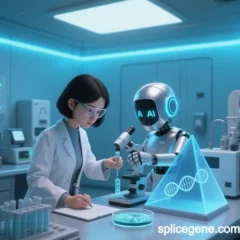CRISPR (Clustered Regularly Interspaced Short Palindromic Repeats) is a revolutionary gene-editing technology derived from a natural bacterial immune system.
Key points:
Uses a guide RNA to direct the Cas9 protein to cut specific DNA sequences.
Allows precise insertion, deletion, or modification of genes.
Applications: curing genetic diseases, improving crops, biomedical research.
Nobel Prize in Chemistry (2020) awarded to Doudna & Charpentier for its discovery.
It’s faster, cheaper, and more accurate than older gene-editing methods.

invivodelivery.com
In Vivo Delivery: Applications in Gene Therapy, Tumor Targeting, and Personalized Medicine In vivo delivery refers to the direct administration of bioactive substances (e.g., gene-editing tools, nucleic acid drugs, proteins) into target tissues or cells within a living organism. Its core value lies …

selfhealmat.com
Self-Healing Materials in Life Sciences: Definitions, Mechanisms, and Applications Self-healing materials are intelligent substances capable of autonomously repairing physical damage (e.g., cracks, fractures) or functional degradation through intrinsic or extrinsic mechanisms. In life sciences, this…

BioAIGenome.com
Bio AI Genome: AI-Driven Systems for Genome Analysis, Editing, and Simulation Bio AI Genome represents the convergence of artificial intelligence (AI) and genomics, leveraging machine learning (ML), deep learning (DL), and large language models (LLMs) to enable precise genome decoding, efficient edi…

splicegene.com
Splice Genes: The Architecture and Functional Core of Eukaryotic Genomes Splice genes—characterized by protein-coding exons interspersed with non-coding introns—are a hallmark of eukaryotic genomes. These genes require RNA splicing to remove introns and generate mature mRNA, serving as both a regula…

curegenome.com
Cure Genome: Permanent Genomic Defect Repair via Gene-Editing Technologies Breakthroughs in gene-editing technologies, particularly CRISPR-Cas9 system optimizations, have enabled precise strategies to permanently repair pathogenic genomic defects. By directly modifying DNA sequences or regulating ge…

VelomRNAcom
Velo mRNA: Decoding Dynamic mRNA Patterns via RNA Velocity Theory RNA velocity is a computational method that quantifies the relative abundance of unspliced and spliced mRNAs to reveal dynamic gene expression changes. By modeling transcriptional kinetics, it predicts future cellular states, enabling…

mrnaspeed.com
mRNA Velocity in Cancer: Advances in Transcription Rate Mutations and Therapeutic Prospects mRNA velocity—defined as the elongation rate of RNA polymerase during transcription and the dynamic lifecycle of mRNA from synthesis to degradation—has emerged as a critical factor in cancer biology. Aberrant…

aigenedit.com
AI Gen Edit: Advances in AI-Driven Gene Editing for Precision Medicine and Synthetic Biology The integration of artificial intelligence (AI) and gene-editing technologies is reshaping life sciences, enhancing the precision, efficiency, and controllability of genetic interventions across precision me…

ecosynbio.com
Ecosyn Bio: Synthetic Biology for Reconstructing Natural Ecosystem Functions Synthetic biology is revolutionizing natural ecosystems through molecular-level redesign, creating artificial biological components, metabolic networks, and communities to enhance or restore ecological functions. Termed "Ec…

bioalgal.com
Latest Advances in Algal Biotechnology: Innovations and Applications (2025 Update) Algal biotechnology has evolved from foundational research to industrial-scale applications, spanning energy, agriculture, medicine, and environmental sustainability. Below is a systematic analysis of core breakthroug…










